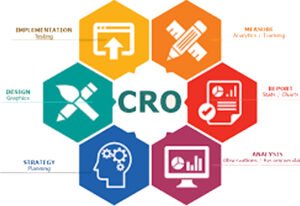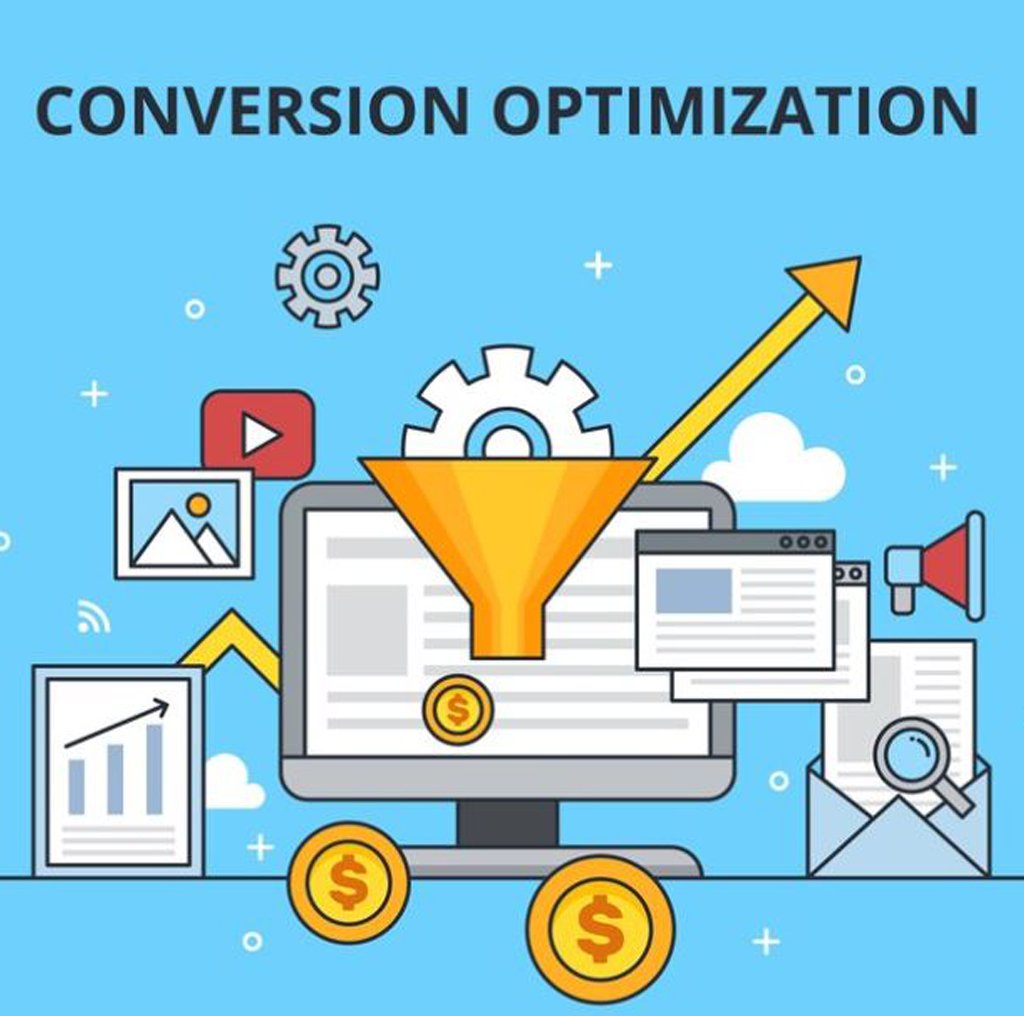Common CRO Mistakes and How to Avoid Them

Conversion Rate Optimization (CRO) is a crucial component of any successful digital marketing strategy. It involves improving the percentage of website visitors who take a desired action, such as making a purchase, signing up for a newsletter, or filling out a contact form. Despite its importance, many businesses make common mistakes when attempting to optimize their conversion rates. This comprehensive guide will explore these common CRO mistakes and provide actionable strategies to avoid them.
1. Neglecting User Experience (UX)
Mistake:
One of the most prevalent mistakes in CRO is neglecting the user experience (UX). A website may have excellent traffic, but if the UX is poor, visitors are unlikely to convert. Common issues include slow page load times, confusing navigation, and unresponsive design.
Solution:
To avoid this mistake, focus on creating a seamless and intuitive user experience. This involves:
- Optimizing Page Load Times: Use tools like Google PageSpeed Insights to identify and fix issues that slow down your site. Compress images, leverage browser caching, and minimize JavaScript.
- Simplifying Navigation: Ensure that your site is easy to navigate with a clear and logical structure. Use descriptive labels for menu items and avoid cluttering the navigation bar.
- Responsive Design: Make sure your website is mobile-friendly. Test it on various devices and screen sizes to ensure a consistent experience across all platforms.
2. Ignoring Data and Analytics
Mistake:
Another common mistake is making changes based on assumptions rather than data. Without proper analytics, you might be optimizing the wrong elements of your website.
Solution:
Implement a robust analytics strategy to inform your CRO efforts:
- Use Tools like Google Analytics to track user behavior, conversion paths, and drop-off points. Understand where visitors are coming from and what actions they are taking on your site.
- A/B Testing: Conduct A/B tests to compare different versions of a webpage. This helps you determine which changes positively impact conversion rates.
- Heatmaps and Session Recordings: Use tools like Hotjar or Crazy Egg to see where users click, scroll, and spend the most time. This provides insights into how visitors interact with your site.
3. Overlooking Mobile Users
Mistake:
In the age of smartphones, ignoring mobile users is a significant CRO mistake. A site that looks great on a desktop might not offer the same experience on a mobile device.
Solution:
Prioritize mobile optimization to ensure a smooth experience for all users:
- Responsive Design: Ensure your website automatically adjusts to fit any screen size.
- Simplified Forms: Mobile users are less likely to complete lengthy forms. Keep forms short and only ask for essential information.
- Mobile-Friendly CTAs: Make sure your call-to-action (CTA) buttons are easily clickable on mobile devices.
4. Failing to Define Clear Goals
Mistake:
Without clear goals, it’s challenging to measure the success of your CRO efforts. Many businesses fail to define what they want to achieve, leading to unfocused and ineffective optimization strategies.
Solution:
Set specific, measurable, achievable, relevant, and time-bound (SMART) goals for your CRO strategy:
- Identify Key Metrics: Determine which metrics are most important for your business, such as conversion rate, average order value, or lead generation.
- Set Benchmarks: Use historical data to set realistic benchmarks for your goals.
- Regularly Review and Adjust Goals: Continuously monitor performance and adjust your goals as necessary to reflect changing business priorities.
5. Inconsistent Messaging
Mistake:
Inconsistent messaging can confuse and deter potential customers. This includes discrepancies between ad copy and landing page content, or between different pages on your site.
Solution:
Ensure consistency in your messaging across all touchpoints:
- Match Ad Copy and Landing Pages: Ensure that the message in your ads aligns with the content on your landing pages. This includes using the same keywords and tone.
- Uniform Branding: Maintain a consistent brand voice and visual identity across all pages of your website.
- Clear Value Proposition: Communicate your value proposition on every page. Ensure that visitors understand what makes your product or service unique.
6. Ignoring the Importance of Trust
Mistake:
Lack of trust is a significant barrier to conversions. If visitors don’t trust your website, they’re unlikely to complete a desired action.
Solution:
Build trust with your audience through various means:
- Display Trust Badges: Use security badges, payment icons, and third-party endorsements to reassure visitors.
- Customer Reviews and Testimonials: Showcase positive reviews and testimonials to build credibility.
- Transparent Policies: Clearly display your privacy policy, return policy, and contact information to show transparency and reliability.
7. Poorly Designed Calls-to-Action (CTAs)
Mistake:
A poorly designed or placed call-to-action (CTA) can significantly impact conversion rates. Common issues include CTAs that are hard to find, unappealing, or unclear.
Solution:
Design effective CTAs that drive conversions:
- Prominent Placement: Place CTAs in visible and strategic locations, such as above the fold or at the end of content sections.
- Compelling Copy: Use action-oriented language that communicates what the visitor should do next. Examples include “Buy Now,” “Sign Up,” or “Get Started.”
- Contrast and Visibility: Ensure CTAs stand out by using contrasting colors and large, readable fonts.
8. Neglecting the Checkout Process
Mistake:
For e-commerce sites, a cumbersome or confusing checkout process can lead to cart abandonment and lost sales.
Solution:
Streamline the checkout process to reduce friction:
- Simplify the Steps: Minimize the number of steps required to complete a purchase. Use a progress indicator to show users how close they are to finishing.
- Guest Checkout: Offer a guest checkout option for users who don’t want to create an account.
- Reduce Form Fields: Only ask for essential information during checkout to make the process quick and easy.
9. Not Testing for Different Audiences
Mistake:
Assuming that all visitors are the same can lead to ineffective optimization. Different audience segments may respond differently to various elements of your site.
Solution:
Segment your audience and test accordingly:
- Audience Segmentation: Use analytics to segment your audience based on demographics, behavior, and other criteria.
- Personalized Experiences: Tailor your content and offers to different segments to increase relevance and engagement.
- A/B Testing for Segments: Conduct A/B tests for different audience segments to determine what works best for each group.
10. Overcomplicating the Design
Mistake:
An overly complex design can overwhelm visitors and distract them from taking the desired action. This includes excessive use of graphics, animations, or pop-ups.
Solution:
Keep your design clean and focused on the user’s needs:
- Minimalist Design: Use a clean, minimalist design that directs attention to key elements like CTAs.
- Limit Distractions: Avoid unnecessary elements that can distract or frustrate visitors, such as excessive pop-ups or auto-playing videos.
- Focus on Functionality: Prioritize functionality over aesthetics. Ensure that your site is easy to use and navigate.
11. Ignoring Post-Conversion Optimization
Mistake:
Many businesses focus solely on getting the conversion and neglect post-conversion optimization. This can lead to missed opportunities for repeat business and customer loyalty.
Solution:
Optimize the post-conversion experience to foster long-term relationships:
- Thank You Pages: Use thank you pages to engage with customers after a conversion. Provide additional resources, upsell related products, or encourage social sharing.
- Follow-Up Emails: Send follow-up emails to nurture new customers. Offer personalized recommendations, discounts, or content to keep them engaged.
- Customer Feedback: Collect feedback from customers to identify areas for improvement and enhance their overall experience.
12. Relying Solely on Best Practices
Mistake:
While best practices are valuable, relying solely on them can limit your CRO potential. What works for one business may not work for another.
Solution:
Use best practices as a starting point but adapt them to your unique context:
- Experiment and Innovate: Don’t be afraid to try new approaches and think outside the box. Continuously test and refine your strategies based on your specific audience and goals.
- Data-Driven Decisions: Base your decisions on data and insights rather than blindly following best practices. Regularly review analytics and testing results to inform your optimization efforts.
13. Not Utilizing Social Proof
Mistake:
Failing to leverage social proof can hinder your CRO efforts. Social proof, such as customer reviews and testimonials, can significantly influence purchasing decisions.
Solution:
Incorporate social proof throughout your website:
- Customer Testimonials: Showcase positive testimonials prominently on your site.
- User Reviews: Allow customers to leave reviews and display them on product pages.
- Case Studies: Highlight case studies and success stories to demonstrate the value of your product or service.
14. Overlooking Content Quality
Mistake:
Poor content quality can deter visitors and negatively impact your conversion rates. This includes content that is unengaging, irrelevant, or difficult to understand.
Solution:
Focus on creating high-quality, engaging content:
- Relevant and Valuable: Ensure your content is relevant to your audience and provides value. Address their pain points and offer solutions.
- Clear and Concise: Write clearly and concisely. Avoid jargon and complex language.
- Engaging Formats: Use a mix of content formats, such as videos, infographics, and blog posts, to keep visitors engaged.
15. Not Prioritizing Page Speed
Mistake:
Slow page load times can significantly impact user experience and conversion rates. Visitors are likely to abandon a site that takes too long to load.
Solution:
Prioritize page speed optimization:
- Optimize Images: Compress images and use the appropriate file formats to reduce load times.
- Minimize HTTP Requests: Reduce the number of elements on a page to minimize HTTP requests.
- Leverage Browser Caching: Use browser caching to store static resources and reduce load times for returning visitors.
16. Neglecting the Importance of SEO
Mistake:
Ignoring search engine optimization (SEO) can limit your website’s visibility and traffic, which in turn affects your conversion rates.
Solution:
Integrate SEO with your CRO efforts:
- Keyword Research: Conduct keyword research to identify relevant keywords for your target audience. Optimize your content and meta tags accordingly.
- On-Page SEO: Ensure your site’s on-page SEO elements, such as title tags, meta descriptions, and header tags, are optimized.
- Content Optimization: Create high-quality content that is both user-friendly and search engine-friendly.
17. Not Addressing Abandoned Carts
Mistake:
For e-commerce sites, abandoned carts represent a significant lost opportunity. Many businesses fail to address this issue effectively.
Solution:
Implement strategies to recover abandoned carts:
- Cart Abandonment Emails: Send automated emails to remind customers of their abandoned carts and encourage them to complete their purchases. Offer incentives, such as discounts, to entice them back.
- Exit-Intent Popups: Use exit-intent popups to offer a special deal or reminder when a visitor is about to leave the site with items in their cart.
- Simplify the Checkout Process: Address common reasons for cart abandonment, such as high shipping costs or complicated checkout procedures.
18. Underestimating the Power of Visuals
Mistake:
Neglecting the use of visuals can make your site less engaging and less likely to convert visitors.
Solution:
Incorporate compelling visuals to enhance user engagement:
- High-Quality Images: Use high-quality images that are relevant to your content and products.
- Videos: Incorporate videos to explain complex concepts, showcase products, or provide customer testimonials.
- Infographics: Use infographics to present information in a visually appealing and easy-to-understand format.
19. Not Personalizing User Experiences
Mistake:
Providing a one-size-fits-all experience can lead to missed conversion opportunities. Personalization can significantly enhance user engagement and conversion rates.
Solution:
Implement personalization strategies to tailor the user experience:
- Dynamic Content: Use dynamic content to display personalized messages, offers, and recommendations based on user behavior and preferences.
- Segmentation: Segment your audience and create targeted campaigns for different user groups.
- Behavioral Targeting: Use behavioral targeting to deliver relevant content and offers based on users’ past interactions with your site.
20. Overlooking the Importance of Copywriting
Mistake:
Poor copywriting can fail to persuade visitors to take the desired action. This includes unclear, uninspiring, or error-laden copy.
Solution:
Invest in high-quality copywriting:
- Clear and Persuasive: Write clear, concise, and persuasive copy that speaks directly to your audience’s needs and desires.
- Compelling Headlines: Use compelling headlines to grab attention and encourage visitors to read further.
- Proofreading: Ensure all content is free of grammatical errors and typos. Proofread thoroughly before publishing.
21. Not Utilizing Retargeting
Mistake:
Failing to retarget visitors who have previously interacted with your site can result in lost conversion opportunities.
Solution:
Implement retargeting strategies to bring visitors back:
- Retargeting Ads: Use retargeting ads to reach visitors who have left your site without converting. Show relevant ads to remind them of your products or services.
- Email Retargeting: Send personalized emails to users who have shown interest in your site but haven’t converted. Offer incentives to encourage them to return.
22. Ignoring User Feedback
Mistake:
Ignoring user feedback can lead to missed opportunities for improvement. User feedback provides valuable insights into what’s working and what’s not.
Solution:
Actively seek and utilize user feedback:
- Surveys and Polls: Use surveys and polls to gather feedback from your visitors. Ask specific questions about their experience and how it can be improved.
- User Testing: Conduct user testing to observe how visitors interact with your site and identify pain points.
- Feedback Forms: Provide easy-to-use feedback forms on your site to encourage users to share their thoughts and suggestions.
23. Not Keeping Up with Trends and Updates
Mistake:
The digital landscape is constantly evolving, and failing to keep up with trends and updates can hinder your CRO efforts.
Solution:
Stay informed about the latest trends and updates:
- Industry Blogs and Publications: Follow industry blogs and publications to stay updated on the latest CRO trends and best practices.
- Webinars and Conferences: Attend webinars and conferences to learn from experts and network with peers.
- Continuous Learning: Invest in continuous learning and training for yourself and your team to stay ahead of the curve.
24. Overcomplicating the Testing Process
Mistake:
An overly complicated testing process can slow down your CRO efforts and make it difficult to see meaningful results.
Solution:
Simplify your testing process:
- Prioritize Tests: Focus on testing changes that are likely to have the biggest impact on your conversion rates.
- Iterative Testing: Conduct iterative tests, making small changes and measuring their impact before moving on to the next test.
- Clear Hypotheses: Formulate clear hypotheses for each test and define success criteria in advance.
25. Failing to Analyze Competitors
Mistake:
Ignoring competitor analysis can lead to missed opportunities for improvement. Understanding what your competitors are doing well can provide valuable insights for your CRO strategy.
Solution:
Conduct thorough competitor analysis:
- Identify Competitors: Identify your main competitors and analyze their websites and CRO strategies.
- Benchmarking: Benchmark your site against competitors to identify areas for improvement.
- Learn from Successes and Failures: Learn from your competitors’ successes and failures to inform your CRO efforts.
Conversion Rate Optimization (CRO) is an ongoing process that requires careful planning, execution, and analysis. By avoiding these common CRO mistakes and implementing the solutions outlined in this guide, you can enhance your website’s performance, increase conversions, and drive business growth. Remember, the key to a successful CRO is to remain data-driven, user-focused, and adaptable to changing trends and user behaviors.

